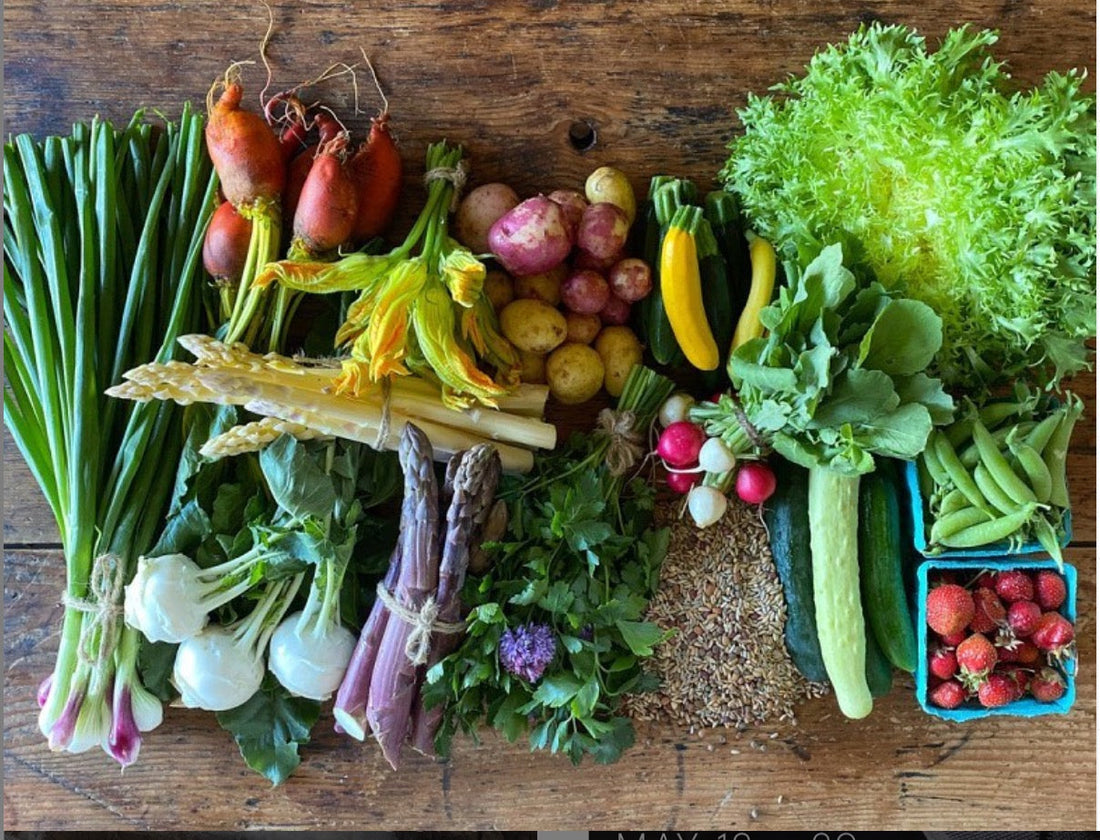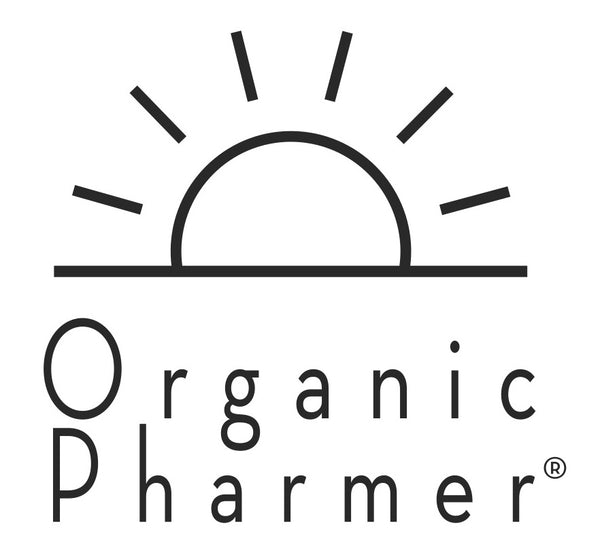
Protect Your Gut Microbiome with Food | Organic Pharmer
Share
Imagine your gut microbiome is an ecosystem. Geographically, it encompasses the entirety of your intestinal tract, beginning at your mouth and ending at your anus. Inside this ecosystem lives a bustling, highly diverse community of 39 trillion microbes (microbiota). The collective genomes of the trillions of microorganisms colonizing your gut in your gut microbiome.

Most of the inhabitants in your gut ecosystem are bacteria. They account for 90 percent of the microbial population and are made up of over 1000 species. Living right alongside your gut bacteria are archaea, ancient microbes that inhabited this planet 4 billion years ago , parasites, multicellular fungi, and viruses. These microorganisms populate every part of your intestinal tract, but you will find them in greatest density inside the dark recesses of your colon. Collectively, they weigh between 3-5 pounds, around the weight of your brain! Their impact on human health is so powerful that researchers now consider your gut microbiome an organ in its own right. (1)
Sounds like a Sci-fi Movie, right?
Don’t worry. Our gut microbiota have co-evolved with us over millions of years to form a complex and mutually beneficial relationship in which we provide them with food and shelter and they pay us back by contributing to our biology in meaningful and essential ways.
Our gut microbiome actually plays an important role in all areas of our health, including digestion, immunity, hormone balance, metabolism, cognition, mood, circadian rhythm, gene expression and more. (2) (3) In fact, research shows our microbiota and its collective genomes actually provide us with genetic and metabolic attributes we have not evolved on our own, including the ability to synthesize vitamins and make use of otherwise inaccessible nutrients from food and turn them into usable energy sources (4) (5) (6)
Long story short, we are in a co-dependent relationship with our gut microbiome.
Maintaining Balance and Harmony in the Gut
Like all natural ecosystems, each microorganism in your gut microbiome plays a specific role and does its part to ensure the balance and health of the system as a whole. When microbial diversity is strong and the proportions of bacterial species are in balance, gut microbes live together in harmony, protecting the integrity of the intestinal wall and contributing to all aspects of human health and well-being. When diversity, function and composition is compromised, there is an imbalance of healthy to unhealthy microbes that leads to dysbiosis and chronic illness, including inflammatory bowel diseases (IBD), irritable bowel syndrome (IBS), diabetes, obesity, autoimmune disease, cancer, cardiovascular and central nervous system disorders and more(6)(7)

Protecting the Harmony of our Gut Microbiome
Although we establish a mostly stable, adult-like microbiome by the time we are three, our microbiome is mutable and highly responsive to our lifestyle habits and environment. Things like diet, stress, sleep, pets, medications and home environment can alter your microbiome on a day to day, or even minute to minute basis (8). While many lifestyle factors can influence the composition and diversity of our gut microbiome, it appears that the community structure and activity of microorganisms in the gut responds most quickly to our food choices.(9)
Studies show that specific gut microbes are associated with specific nutrients, foods, and dietary patterns, meaning every food choice you make has the power to nourish a specific group of microbes and starve out another. Comparing the gut microbiomes of rural Hadza hunter gatherers from Tanzania to urban Italian populations, researchers found that the Hazda, who enjoy a diet rich in complex carbohydrates, have increased microbiota biodiversity and enrichment of healthy gut bacteria compared to the populations from industrialized Italy, who have reduced microbiome stability and diversity. (10)
Since the composition and balance of our microbiome is largely determined by our food choices, consuming foods that amplify the healthy populations of beneficial bacteria and add to the overall diversity of our microbial populations is a key consideration when deciding what to put on your plate.

So What Should You Be Eating?
Plants, Plants and More Plants!
Healthy gut microbes love fiber and polyphenol rich foods. Where do you find fiber and polyphenols? Exclusively in plants.
Research shows that a whole food-plant-based diet, filled with a wide variety of fiber-rich, colorful vegetables, fruits, whole grains, legumes, nuts and seeds nourishes the beneficial bacteria in your gut and contributes to the diversity of the gut microbiome as a whole. (12) Conversely, diets high in animal proteins, saturated fats, sugar, artificial sweeteners, and refined carbohydrates nourish the bad gut bacteria. When bad bacteria flourish, they kill off helpful microbes and throw off the balance of your microbiome. Imbalance in the gut microbiota has been linked with gastrointestinal conditions such as reflux and inflammatory bowel disease as well as systemic conditions such as obesity, atherosclerosis, type 2 diabetes, cancer, Alzheimer's and Parkinson's disease, autism spectrum disorder, allergies and more. (12)(13) When it comes to our microbiome, variety may be as important as the quantities of plant foods on our plate. Plant foods are composed of different kinds of fiber and phytochemicals which support different microbial species. Since diversity is key to a healthy microbiome, you will want to challenge yourself to not just eat more plants, but new and different types of plants too.
What Should you be Limiting in your Diet?
Highly processed foods and carbohydrates, added sugars, saturated fats and artificial sweeteners. Studies how that long-term consumption of these foods can lead to the extinction of several classes of the gut microbiota and create dysbiosis in your gut, triggering chronic disease, autoimmunity and gastrointestinal illnesses. (12)(13) Diets too high in animal protein have also been shown to compromise the health and diversity of your gut microbiome, so reducing your consumption of animal products can be helpful too.
Actionable Takeaways for a Healthy Gut and a Healthy You
- You can shape your gut microbiota and take an active role in your health.
- Your gut microbiota is highly responsive to your food choices. Be strategic.
- When you control your food choices, you control the composition of your gut microbiome which means you control your health.
- Eat more plants. At every meal ask yourself, “How can I get more plants on my plate?”
- Try new and different plant foods: A diet composed of diverse and different plant foods, promotes gut diversity which, in turn, promotes health.
- Eat the rainbow: Polyphenols give plant food their color.
- Limit or avoid processed foods and carbohydrates, added sugars, saturated fats, artificial sweeteners
- Reduce your consumption of animal proteins.
Hope you found this second post in our microbiome series interesting.
